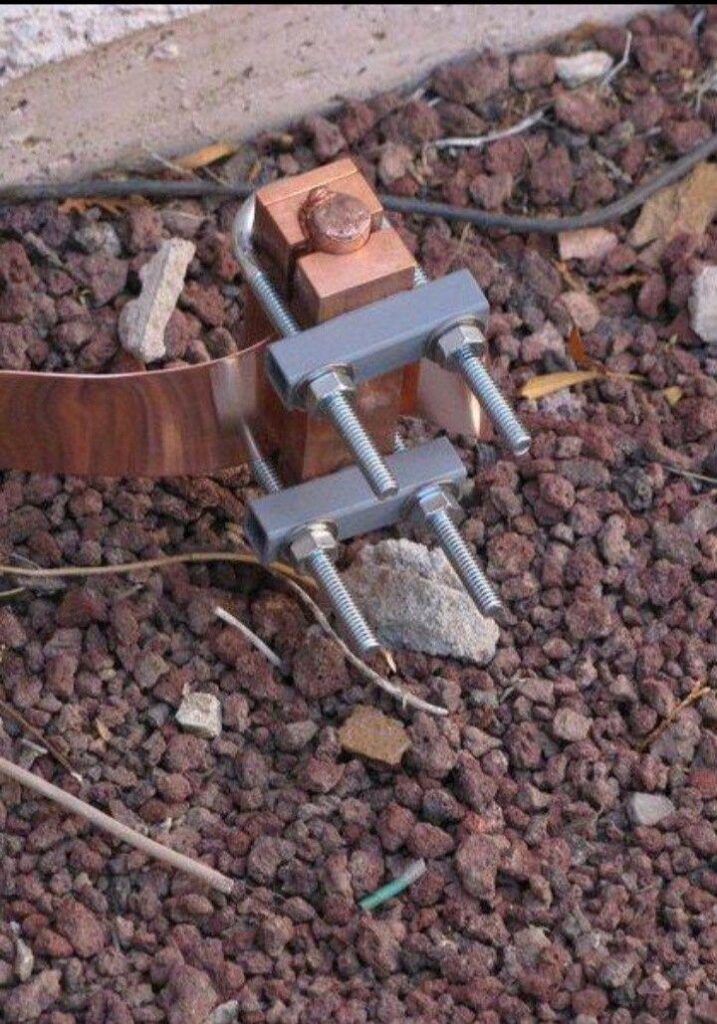Electrical safety is an important part of any wiring system and one of the key components that ensure protection is a grounding clamp. But what is a grounding clamp, and why is it so important? In this article, we’ll explore the purpose, types, and significance of grounding clamps in electrical systems.
What Is a Grounding Clamp?
A grounding clamp is an electrical component used to connect a ground wire to a grounding rod, pipe, or other conductive surfaces. Its purpose is to evenly distribute electricity to minimize the risk of short circuits and equipment damage. However, the risk of EMF radiation is still there, so using a grounding clamp along with any EMF solutions could help prevent such harmful radiation.
The Importance of Grounding Clamps in Electrical Systems
- Ensuring Electrical Safety
One of the primary reasons grounding clamps and cables are so essential is that they protect people and equipment from dangerous electrical faults. By securely fastening the ground wire to a grounding rod or metal surface, grounding clamps create a safe route for excess electricity to travel into the earth, preventing electrocution and fire hazards.
- Enhancing Equipment Longevity
Electrical surges can damage sensitive equipment and lead to costly repairs. A properly installed electrical ground clamp helps stabilize voltage levels and prevents fluctuations that could harm electronic devices and machinery.
- Preventing Electrical Fires
Poor grounding increases the risk of electrical fires caused by short circuits and voltage instability. A reliable ground wire clamp ensures that any stray electrical current is safely directed into the earth, reducing the chances of overheating or sparking.
- Compliance with Electrical Codes and Standards
Electrical safety regulations require proper grounding in homes, businesses, and industrial facilities. Using high-quality grounding clamps and cables ensures compliance with National Electrical Code (NEC) standards and other safety guidelines, preventing potential legal and insurance issues.
Types of Grounding Clamps
Grounding clamps come in various designs to suit different applications. Some common types include:
1. Pipe Grounding Clamps
These clamps are used to connect ground wires to metal pipes. They are often found in plumbing and electrical installations where pipes serve as grounding conductors.
2. Rod Ground Clamps
Designed to secure a ground wire to a grounding rod, these clamps are essential for outdoor grounding systems. They provide a firm grip and corrosion resistance to withstand harsh environmental conditions.
3. Screw-Type Grounding Clamps
Screw-type clamps are commonly used in electrical panels and junction boxes. They are easy to install and adjust, making them ideal for various wiring configurations.
4. U-Bolt Ground Clamps
These heavy-duty clamps are used for industrial applications, ensuring a strong connection between large conductors and grounding electrodes.
5. Acorn Ground Clamps
Named for their shape, acorn clamps are widely used for securing grounding conductors to ground rods, providing a durable and long-lasting connection.
How to Install a Grounding Clamp Properly
A poorly installed grounding system can compromise safety and efficiency. Follow these steps to ensure proper installation of a grounding clamp:
- Choose the Right Clamp
Select a grounding clamp that matches the size of your grounding rod, pipe, or conductor. The material should be corrosion-resistant, especially for outdoor applications.
- Clean the Contact Surface
Before attaching the clamp, ensure that the surface of the grounding rod or pipe is clean and free from rust, paint, or debris. This ensures a secure connection.
- Secure the Clamp
Attach the grounding clamp firmly around the rod or pipe using a wrench or screwdriver, depending on the clamp type. Make sure it is tightly fastened to prevent loosening over time.
- Connect the Ground Wire
Insert the ground wire into the clamp and tighten it securely. Ensure that there are no slack or loose strands that could interfere with the connection.
- Test the Grounding System
Use a multimeter or grounding tester to check the resistance of the grounding connection. A low resistance reading confirms that the clamp and grounding system are functioning correctly.

Maintaining Grounding Clamps for Long-Term Safety
Regular maintenance of grounding clamps and cables is essential to keep electrical systems safe and efficient. Here are some key maintenance tips:
- Inspect for corrosion
Check clamps and connections periodically for signs of rust or wear. Replace any corroded parts immediately.
- Ensure a tight connection
Loose grounding clamps can compromise safety. Tighten connections if they appear loose.
- Test grounding resistance
Perform regular electrical grounding tests to verify that the grounding system is effective.
- Use weather-resistant materials
If grounding clamps are exposed to the elements, opt for corrosion-resistant materials like copper or galvanized steel.
Conclusion
A grounding clamp plays a crucial role in electrical safety by securely connecting ground wires to conductive surfaces. It prevents electrical hazards, enhances equipment longevity, and ensures compliance with safety standards. Moreover, you can add a booster box to protect your property from EMF radiations coming from the electrical system.
Understanding what a grounding clamp is and how to install it properly can help protect people and property from electrical faults. Whether you’re an electrician, contractor, or homeowner, investing in the right grounding clamps and cables is a small but essential step toward better electrical safety.